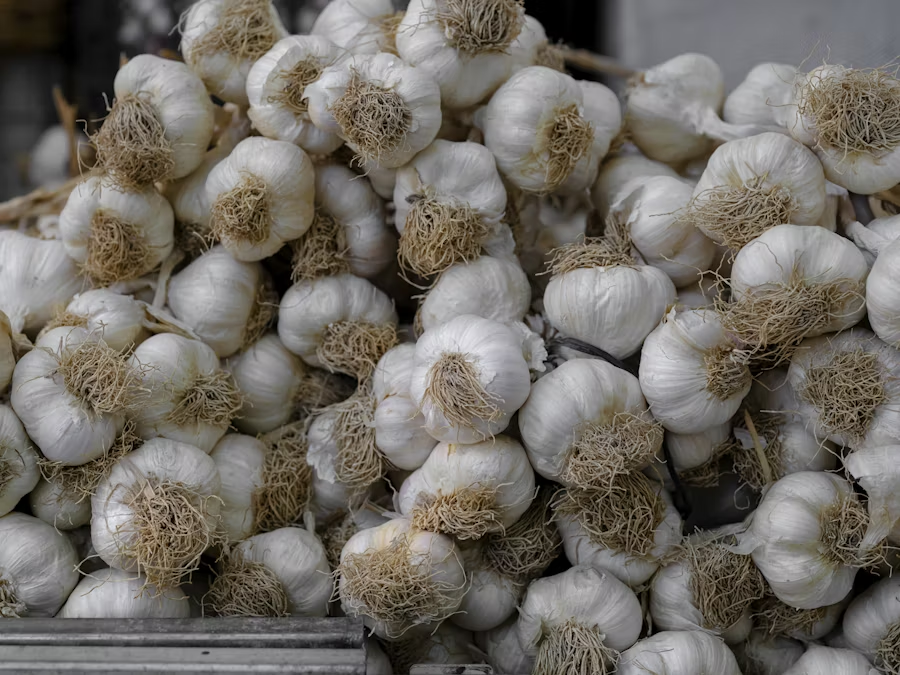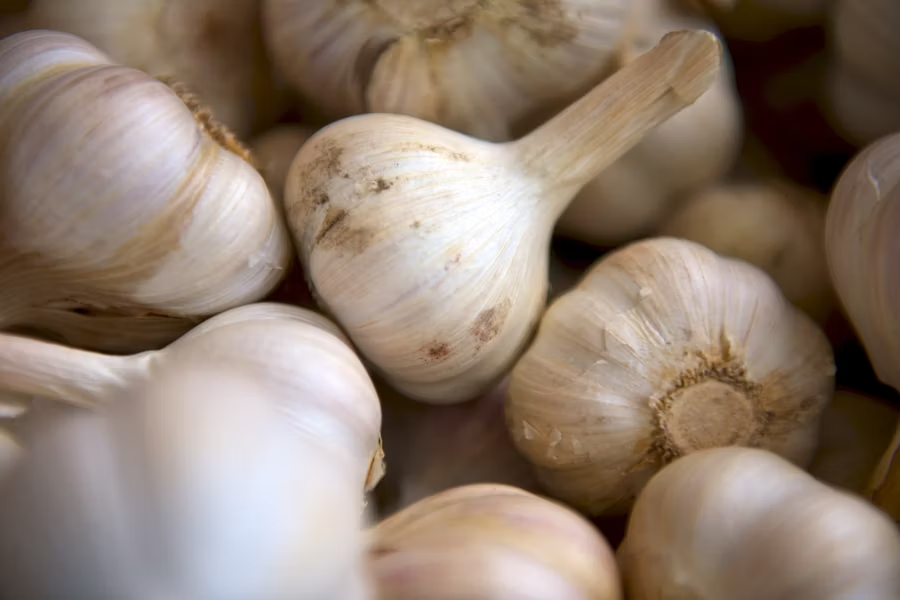Garlic: Nature’s Superfood for Health, Flavor, and Healing
Garlic, known scientifically as Allium sativum, is one of the oldest cultivated plants in the world. Revered for its medicinal properties and pungent flavor, garlic has been used for over 5,000 years—not just as a culinary ingredient, but also as a powerful natural remedy. From ancient Egypt to modern kitchens, garlic remains a staple with impressive health benefits.
In this article, we’ll explore the origins of garlic, its nutritional profile, health benefits, uses in cooking, and how to include it in your daily routine.
A Brief History of Garlic
Garlic has its roots in Central Asia but was widely embraced by civilizations like the Egyptians, Greeks, Romans, and Chinese. Ancient Egyptians gave garlic to laborers to boost strength and endurance. Hippocrates, the father of medicine, used garlic to treat various ailments, including infections and digestive problems.
Today, garlic is grown around the world and used in nearly every cuisine—testament to its global appeal.
Nutritional Powerhouse
Garlic is low in calories but rich in nutrients. A single clove of raw garlic contains:
Manganese
Vitamin B6
Vitamin C
Selenium
Fiber
Small amounts of calcium, potassium, and iron
But its most powerful compound is allicin, the sulfur-based compound responsible for garlic’s strong smell and many of its health properties. Allicin is produced when garlic is chopped, crushed, or chewed.
Health Benefits of Garlic
1. Boosts Immune System
Garlic enhances the body’s immune response. Studies show that regular consumption of garlic can reduce the frequency and severity of colds and flu. The allicin compound is believed to have antiviral, antifungal, and antibacterial properties.
2. Lowers Blood Pressure
High blood pressure (hypertension) is a leading risk factor for heart disease. Several studies show that garlic supplements can significantly reduce blood pressure levels, sometimes as effectively as standard medications, especially in people with elevated blood pressure.
3. Improves Heart Health
Garlic helps lower cholesterol levels, particularly LDL (bad cholesterol), without affecting HDL (good cholesterol). This may reduce the risk of heart disease over time. It also improves circulation and prevents the formation of clots.
4. May Help Prevent Cancer
Some research suggests that regular garlic consumption may lower the risk of certain cancers, particularly those of the stomach and colon. Garlic’s sulfur compounds may help reduce inflammation and slow the growth of cancer cells.

5. Supports Detoxification
Garlic boosts liver function and helps eliminate heavy metals from the body. A study involving employees exposed to high levels of lead found that garlic reduced their lead levels by nearly 20% and relieved associated symptoms.
6. Enhances Athletic Performance
In ancient cultures, garlic was given to athletes and soldiers to reduce fatigue and enhance physical performance. Modern research supports that garlic may help reduce exercise-induced fatigue and improve endurance.
Culinary Uses of Garlic
Garlic is incredibly versatile in the kitchen and adds depth and flavor to dishes. It can be used:
Raw: Adds a sharp bite to salad dressings, dips, and marinades.
Sautéed or Roasted: Becomes mellow, sweet, and nutty—ideal for pasta, vegetables, or meat dishes.
Crushed into sauces: Enhances the flavor of tomato-based or creamy sauces.
As Garlic Oil: Infuses olive oil with garlic for a rich, aromatic cooking base.
Garlic is used in countless global dishes: Italian garlic bread, Chinese stir-fries, Indian curries, and Middle Eastern hummus—to name just a few.
How to Maximize the Benefits of Garlic
Crush or chop garlic and let it rest for 10–15 minutes before cooking. This activates allicin, the health-boosting compound.
Don’t overcook: Excessive heat can destroy beneficial compounds. Add garlic toward the end of cooking for maximum benefit.
Eat it raw for stronger medicinal effects—but be mindful of the intense flavor and odor.
Garlic in Traditional and Herbal Medicine
Garlic has long been used as a natural remedy for various conditions:
Coughs and colds: Garlic tea or raw cloves help relieve symptoms.
Skin infections: Crushed garlic has been applied topically due to its antibacterial properties.
Digestive issues: Garlic stimulates digestion and may help with bloating.
While more research is needed to validate some of these uses, the historical and anecdotal evidence is strong.
Precautions and Side Effects
While garlic is safe for most people, overconsumption can lead to:
Bad breath and body odor
Heartburn or stomach upset
Allergic reactions in rare cases
Garlic may also thin the blood, so people on blood-thinning medications should consult a doctor before taking garlic supplements.
Garlic Supplements: Worth It?
Garlic supplements are available in pills, powders, and oils. While they offer a convenient way to get the benefits without the strong taste, they may not contain as much allicin as fresh garlic. Look for supplements that are allicin-stabilized for better results.
Conclusion
Garlic is more than just a flavorful ingredient—it’s a nutritional powerhouse with proven health benefits. From boosting immunity to promoting heart health, this humble bulb has earned its reputation as a superfood. Whether you eat it raw, roasted, or as a supplement, adding garlic to your diet can support your well-being in multiple ways.
So the next time you’re cooking, don’t hesitate to toss in a clove or two. Your taste buds—and your body—will thank you.

